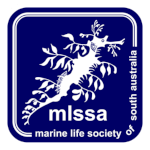Several Australian warships have been scuttled as dive wrecks since 1997.
(The River Class frigate HMAS Derwent was also sunk off Rottnest Island, Western Australia during explosives testing on 21st December 1994.)
The first two warships to be scuttled as dive wrecks in Australian waters were sunk in Western Australia
HMAS Swan
The former River Class frigate (anti-submarine) destroyer escort HMAS Swan (DE-50) was scuttled in Geographe Bay as a dive wreck off of Dunsborough, WA on 14th December 1997, making her the first Australian warship to be scuttled as a dive wreck in Australia.

HMAS Torrens
The Swan ’s sister ship, HMAS Torrens (DE-53) was decommissioned in 1998, shortly after visiting Port Adelaide in August that year. On 14th June 1999, the Torrens was sunk in the Indian Ocean off of the WA coast, but not as a dive wreck this time. She was cut in half by a torpedo fired from the Collins Class submarine HMAS Farncomb. The sub was test firing a 20-year-old guide Mark 48 torpedo. She fired the MK-48 from a depth of 100m. The torpedo hit the mid-ships of the Torrens, which was ‘over the horizon’, 10km away.
(The first four River Class ships, Parramatta, Yarra, Stuart and Derwent, were a modified version of the Royal Navy’s Type ’12’ Whitby and Rothesay Class frigates. The Swan and Torrens were a derivation of the Royal Navy’s Leander Class general purpose frigate, which was itself a development of the Type ’12’. The Swan and her sister ship, HMAS Torrens, were the final two River Class DEs (destroyer escorts) constructed for the RAN.)

HMAS Perth
The former Charles F Adams class GMD (Guided Missile Destroyer) HMAS Perth (DDG-38) became the second Australian warship to be scuttled in Western Australia (& Australia) when she was scuttled as a dive wreck near Albany on 24th November 2001.

(Photo taken by David Nicolson. Source: Part of HMAS II wreck delivered to East Fremantle from Albany | PerthNow)

HMAS Hobart
The former Charles F Adams Class GMD (Guided Missile Destroyer) HMAS Hobart (DDG-39) was scuttled as a dive wreck in Yankalilla Bay on 5th November 2002.

HMAS Brisbane
HMAS Brisbane (DDG-41), another former Charles F Adams Class GMD (Guided Missile Destroyer), was scuttled off of Queensland’s Sunshine Coast on 31st July 2005 to become an artificial reef and dive site.

HMAS Canberra
The former FFG-7 Class frigate HMAS Canberra (FFG-02) was scuttled off Ocean Grove, Victoria on 4th October 2009.

HMAS Adelaide
HMAS Adelaide (FFG-01), another former FFG-7 Class frigate, was sunk 1km off Avoca Beach, near Terrigal on the NSW Central Coast on 13th April 2011.

The Adelaide was the Navy ship that rescued yachtsmen Tony Bullimore & Thierry Dubois in 1997. Her five sister ships were: – Canberra (II), Sydney, Darwin, Melbourne and Newcastle.

UPDATE ON DIVE WRECK SITES AFTER 15-22 YEARS
Extreme weather on the east coast of Australia in 2024 did some damage to the ex-HMAS Adelaide at Terrigal NSW, causing it to break up. Scuttled in 2011, all the superstructure above the main deck has now washed off the wreck and it is now sitting on the sand beside the hull. The dive site had to be closed temporarily until it could be deemed safe because of the unstable sheets of metal.

The ex-HMAS Hobart, however, is still standing strong after 22 years since being scuttled in November 2002. The ex -HMAS Canberra site has also seen severe weather conditions, but the wreck is better oriented into the prevailing swells. Initial engineering had indicated that there would be significant structural breakdown after 20 years on the bottom, and it was scuttled 15 years ago off Barwon Heads in October 2009.

